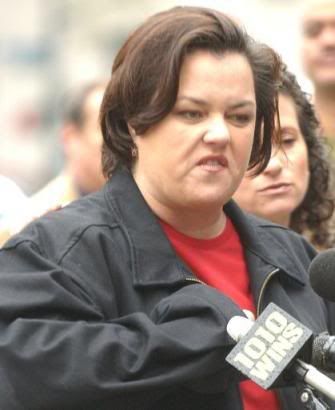Steel Magnolia
Investor Business Daily Editorial
By INVESTOR'S BUSINESS DAILY | Posted Tuesday, May 01, 2007 4:20 PM PT
Conspiracy: Unless the feds had something to do with it, the theory held by Rosie and others that the
In recent discussions on the jaundiced "View" and her Web site, conspiracy theorist Rosie O'Donnell opined that the 9/11 collapse of the Twin Towers, as well as 7 World Trade Center, marked "the first time in history that fire has ever melted steel." This, she said, is "physically impossible."
Well, not exactly. Fire only has to weaken a structure already weakened by, say, a fully fueled passenger aircraft flying into it, sufficiently so that the weight of the structure brings it down.
Rosie as structural engineer.
We wonder what Rosie's reaction was Sunday, when a gasoline truck exploded in flames beneath an elevated section of the San Francisco-Oakland Bay Bridge known as the MacArthur Maze, a network of ramps and interchanges that carries motorists to a number of freeways in the area.
Heat from the burning tanker truck topped 2,750 degrees, softening and buckling steel beams and melting bolts, according to the California Department of Transportation. This weakened part of one overpass, causing it to crumple on top of another.
What lies were the feds trying to cover up this time? Was this an excuse to bomb
As Popular Mechanics has noted in its excellent analysis, "Debunking 9/11 Myths," steel melts at 2,750 degrees but can lose strength at temperatures as low as 400 Fahrenheit. At 1,000 F, steel loses 50% of its strength. So if a burning gas truck can bring down an overpass made of steel wrapped in concrete, imagine what a fully fueled passenger jet flying at 500 mph can do to a skyscraper.
While Rosie conceded that the Twin Towers were hit by passenger jets turned into manned cruise missiles, she was mystified as to why 7 World Trade Center collapsed. But it would have been a miracle if it hadn't.
The National Institute of Standards and Technology reported that debris from the 110-floor
Trusses on the fifth and seventh floors were designed to transfer loads from one set of columns to another. A fifth-floor fire burned for up to seven hours, presumably fed by the pressurized line.
Sorry, Rosie, it appears that on a
